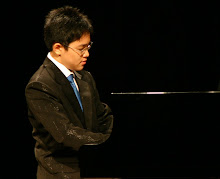Reference: Wikipedia
Music as we know today is often categorized into many genres. We are obviously familiar with music genres such as jazz music, pop music, RnB music, rock music, and classical music. Each genre has a unique form of sound organization, and hence, one can easily tell the difference between one genre and another. But that's not the case in classical music. When we are dealing with classical music, the variety of the genres becomes enormous. The reason is, classical music spanned for more than 4 centuries, and new forms of music kept emerging from time to time. As a result, now we have hundreds of classical music genres classified.
Despite its enormous variety, we can still track the growth of music genres from medieval era until now. In this blog, I'm trying to talk about music genres in each period of classical music. Let's start with Baroque period.
Baroque Period (1600 - 1750)
The widespread use of contrapuntal (counterpoint) technique in this era became a major feature of many keyboard, organ, vocal, and orchestral works. A significant music genre in this era that uses this technique is fugue. Johann Sebastian Bach is a composer who extensively wrote many fugues.
Another genre, Suites, also emerged. Suite in this period is an ordered set of dance-like pieces. Each of these pieces were named after a specific type of dance that flourished at that time. A standard set of a Suite consists of a Prelude, an Allemande, Courante, Sarabande, an Intermezzo, and a Gigue. Johann Sebastian Bach is also a prominent Suite composer.
Organ music were flourished with many virtuosic works such as Toccata and Fantasia.
Classical Period (1750 – 1820)
Moving from Baroque style to Classical style, composers in this era preferred a style which was more transparent and clear. They moved towards music with homophonic texture from music with layered polyphonic texture.
Two most important genres in this period are Symphony and Chamber music. Symphony is an orchestra work that consists of 3 or 4 movements, each with its own theme. Chamber music, on the other hand, is a kind of music that is written for a small group of instruments, for instance, a string quartet (which is prominent in classical period). Joseph Haydn is a prominent composer of both symphony and string quartet, and is known as the “father of Symphony” and the “father of string quartet”. Wolfgang Amadeus Mozart composed over 40 symphonies throughout his life. In late classical period, Ludwig van Beethoven emerged with his nine symphonies, which has now become most performed works in the whole world.
Another prominent genre in this period is opera, with Mozart as the most important composer for it. Some of Mozart's most prominent operas are “the Marriage of Figaro”, “the Magic Flute”, “the Abduction of Seraglio”, and “Don Giovanni”.
A lot of piano works were as well composed with the invention of piano by Cristofori. Haydn, Mozart, and Beethoven composed many piano sonatas.
Romantic Period (1815 – 1910)
In this period, music has moved towards a new style. Composers in this era sought to compose with a greater and richer harmonic range, and a freer style.
As a continuation of Classical music, some genres like symphony, sonata and opera remained prominent in Romantic period. In orchestral works such as symphonies, the orchestration expanded with the addition of instruments with lower range.
In this period, nationalism music as a music genre also appeared. Composers like Chopin, Liszt, composed pieces with regard to their own nationalities. Chopin, for example, composed many Mazurkas: a form of piano music that was written in the style of a Mazurka, a traditional dance form of Poland. Liszt, on the other hand, composed his famous Hungarian Rhapsodies.

No comments:
Post a Comment